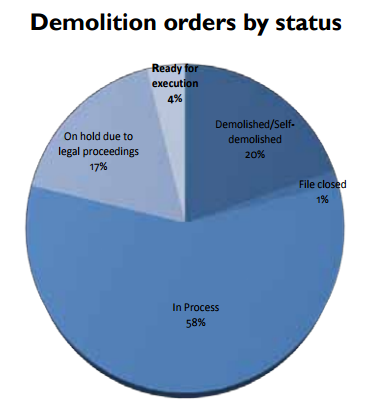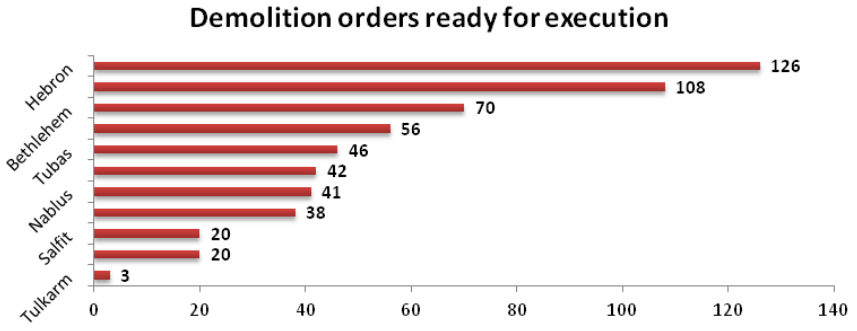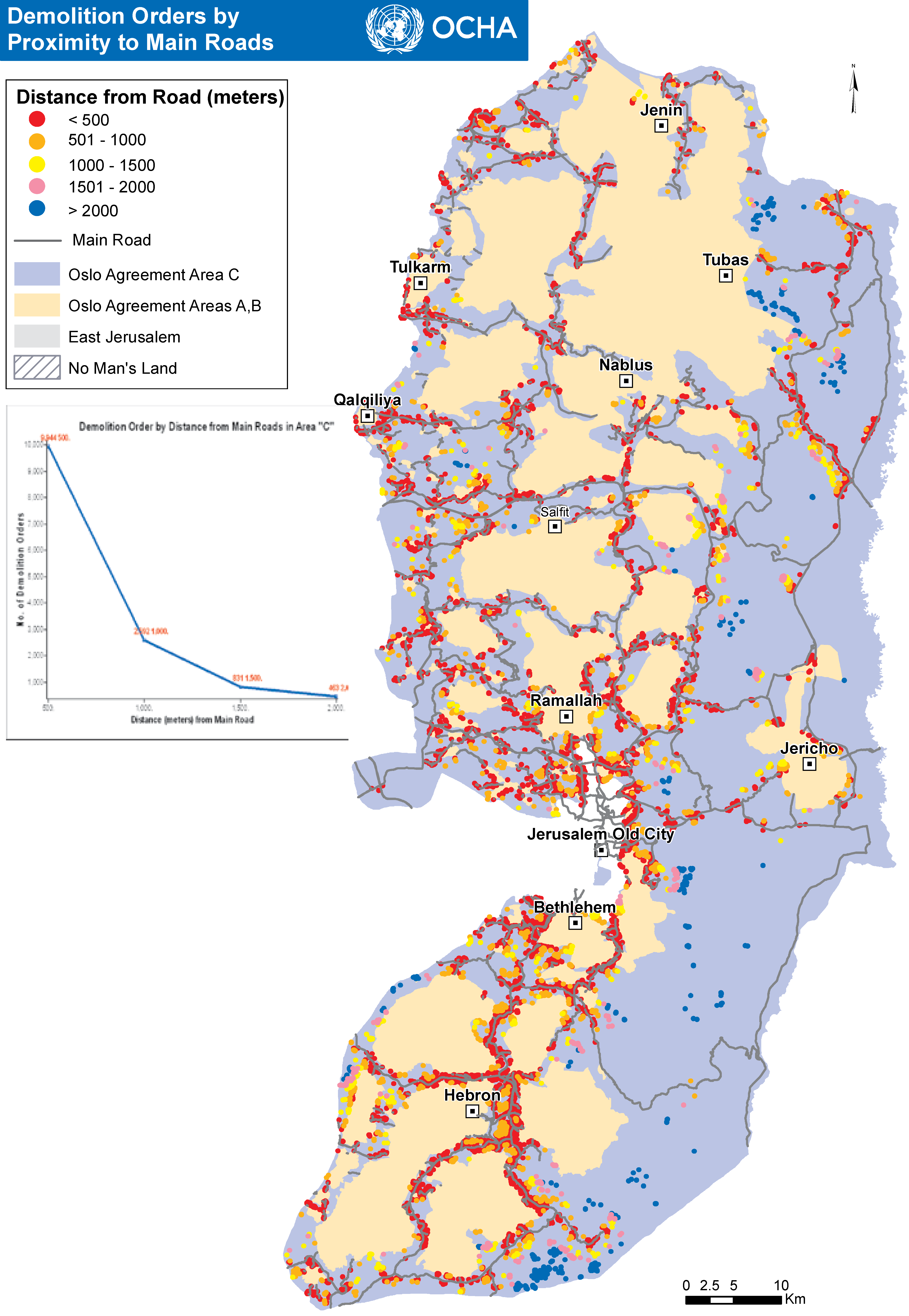Over 11,000 outstanding demolition orders against Palestinian structures in Area C of the West Bank
570 orders are “ready for execution” according to the Israeli Civil Administration
Over 60 per cent of the West Bank is designated as Area C and comprises 532 communities and residential areas housing approximately 300,000 Palestinians.[1] Around 341,000 Israeli settlers also live in 135 settlements and 100 settlement outposts in Area C in contravention of international law.[2] Israel retains nearly exclusive control in Area C, including for planning and zoning, administration of the land registry, and the designation and allocation of public land.
According to a recent dataset[3] obtained from the Israeli Civil Administration (ICA), between 1988 and 2014 the ICA issued a total of 14,087 demolition orders against Palestinian-owned structures in Area C on the grounds that they lacked the required building permits.[4] The number of structures actually affected by these orders is higher, as some orders target several structures. The dataset further indicates that almost 20 per cent of these orders (2,802 orders) have already been executed and another one per cent cancelled, resulting in a total of 11,134 demolition orders currently outstanding
Of the outstanding demolition orders, 570 (approximately five per cent) that target structures in 193 communities and residential areas, are labelled by the ICA as “ready for execution”. This may be understood as orders that are not being challenged (legally or otherwise) and for which administrative preparations have been completed. The remaining outstanding orders are classified by the ICA as either “in process” (8,110 orders) or on hold due to legal proceedings (2,454 orders). The nature of the “process” referred to in the former category is not explained in the dataset itself and remains unclear.
The outstanding orders are mainly concentrated in the governorate of Hebron with 3,669 orders, followed by Jerusalem (1,756), Ramallah (1,173) and Bethlehem governorates (1,145). An initial analysis of the geographical distribution of the orders shows a particularly high concentration in areas known to be affected by high vulnerability levels, such as Masafer Yatta (Hebron), the Gush Etzion settlement block (Bethlehem) and the Ma’aleh Adumin settlement area (E1 Plan). This analysis also indicates a correlation between the distribution of the orders and the location of main roads in Area C: the closer a structure is to a main road, the higher the possibility of it receiving a demolition order.

Due to the nature of the planning system applied by the Israeli authorities in Area C, it is almost impossible for most Palestinians to obtain building permits, forcing them to build without Israeli authorization to meet their needs, and consequently face the risk of demolition.[5] Under this system, less than one per cent of Area C is zoned for Palestinian development, while virtually all public land (also known as “state land”) has been placed within the jurisdictional boundaries of illegal Israeli settlements. The Israeli authorities also prevent the development of most private land in Area C on the grounds that it has been zoned as agricultural. The restrictions applied through this system impede Palestinians residential and community development, restrict their access to basic services, such as health, education, water and sanitation, and result in a range of protection threats. Donor-funded assistance provided to vulnerable Area C communities has also increasingly been targeted in recent years, with 118 such structures demolished in 2014, compared to 90 in 2013.
Under international law, Israel, as the occupying power, has an obligation to ensure that the basic needs of Palestinians are met and that they are able to exercise their human rights, including their right to an adequate standard of living, to adequate housing and to be free from discrimination. The law also prohibits the forced transfer or displacement of civilians within the occupied territory, the transfer of population from the occupying power’s territory into occupied territory, and the destruction of private or public property. According to the UN Secretary-General, “Israel has to, in compliance with international law, amend the planning legislation and processes in order, in particular, to ensure the security of tenure and the full participation of Palestinians. Israel must also refrain from implementing evictions and demolition orders based on discriminatory and illegal planning policies, laws and practices.”[6]


[1] In the Spotlight: Area C Vulnerability Profile, OCHA 2014.
[2] The Israeli Central Bureau of Statistics
[3] This dataset was obtained from the Israeli Civil Administration (ICA) by Israeli researcher Dror Etkes based on the Israeli Freedom of Information Act.
[4] This total figure excludes 343 orders that, according to the coordinates referred to in the ICA dataset, fall in areas A, B, H2, East Jerusalem and no man’s land.
[5] For details on this process, see OCHA oPt, “Restricting Space: The Planning Regime Applied by Israeli in Area C of the West Bank,” December 2009.
[6] A/HRC/25/38, section VIII, para. 53.









